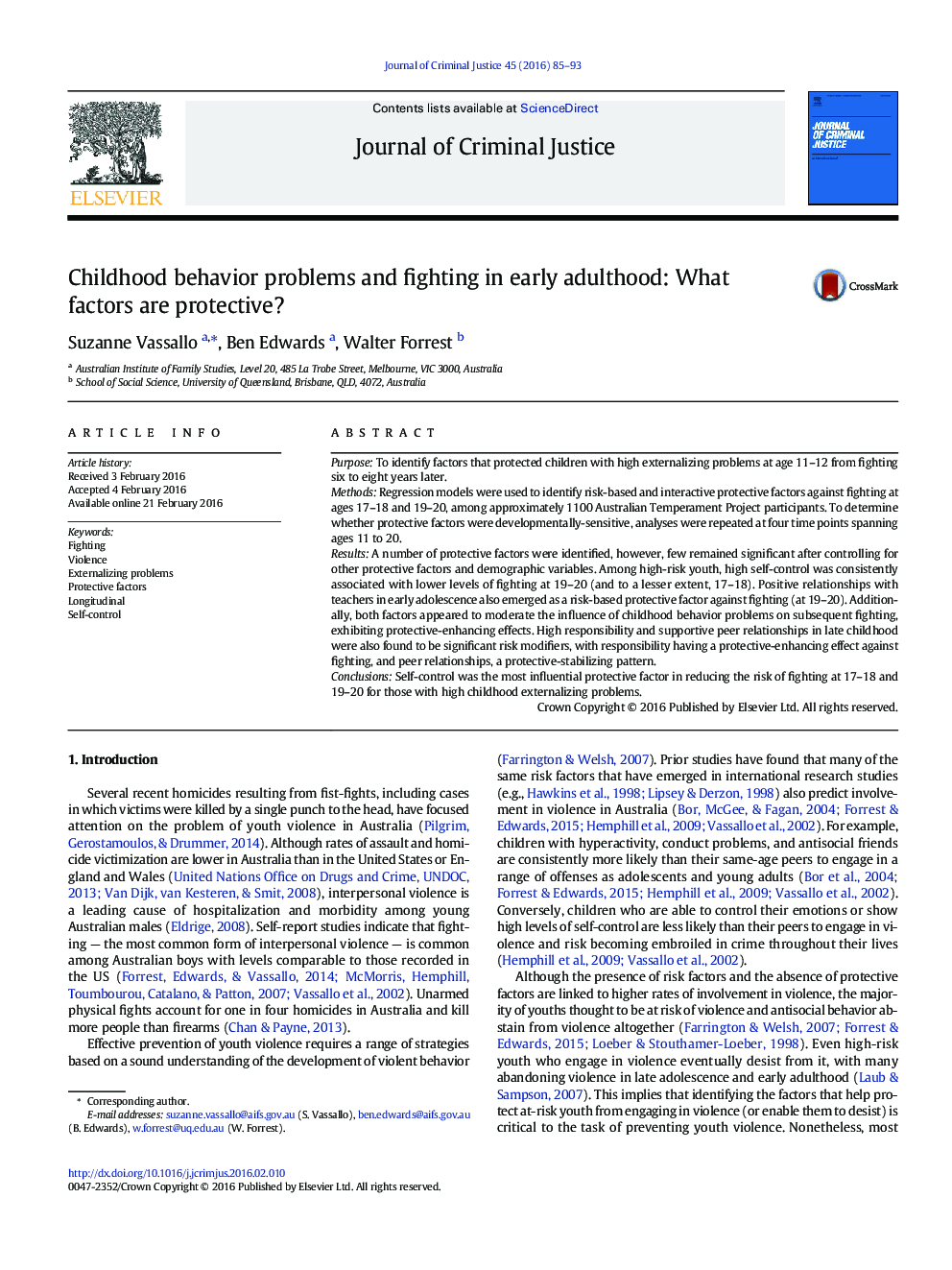| کد مقاله | کد نشریه | سال انتشار | مقاله انگلیسی | نسخه تمام متن |
|---|---|---|---|---|
| 882627 | 1471588 | 2016 | 9 صفحه PDF | دانلود رایگان |
• Aimed to identify protective factors against subsequent fighting in at-risk youth
• High self-control was consistently associated with lower fighting in early adulthood.
• Positive relationships with teachers in early adolescence were also protective.
• High responsibility and supportive friendships in late childhood also modified risk.
PurposeTo identify factors that protected children with high externalizing problems at age 11–12 from fighting six to eight years later.MethodsRegression models were used to identify risk-based and interactive protective factors against fighting at ages 17–18 and 19–20, among approximately 1100 Australian Temperament Project participants. To determine whether protective factors were developmentally-sensitive, analyses were repeated at four time points spanning ages 11 to 20.ResultsA number of protective factors were identified, however, few remained significant after controlling for other protective factors and demographic variables. Among high-risk youth, high self-control was consistently associated with lower levels of fighting at 19–20 (and to a lesser extent, 17–18). Positive relationships with teachers in early adolescence also emerged as a risk-based protective factor against fighting (at 19–20). Additionally, both factors appeared to moderate the influence of childhood behavior problems on subsequent fighting, exhibiting protective-enhancing effects. High responsibility and supportive peer relationships in late childhood were also found to be significant risk modifiers, with responsibility having a protective-enhancing effect against fighting, and peer relationships, a protective-stabilizing pattern.ConclusionsSelf-control was the most influential protective factor in reducing the risk of fighting at 17–18 and 19–20 for those with high childhood externalizing problems.
Journal: Journal of Criminal Justice - Volume 45, June 2016, Pages 85–93
